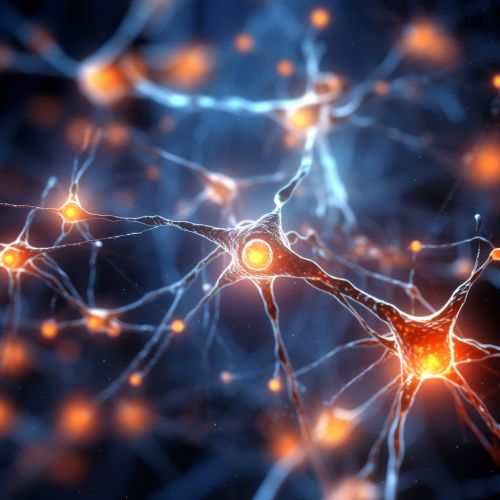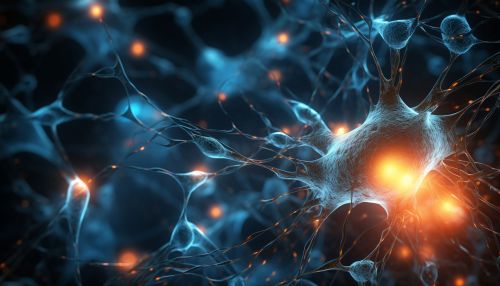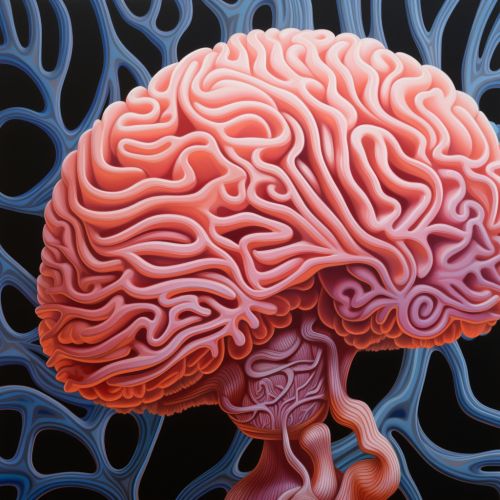Synaptic Plasticity
Introduction
Synaptic plasticity is the ability of the connections, or synapses, between two neurons to change in strength in response to either an increase or decrease in their activity. This dynamic process is believed to be critical for learning and memory.


Mechanisms of Synaptic Plasticity
Synaptic plasticity involves several mechanisms at both the cellular and molecular level. These mechanisms are primarily driven by the activity of the neurons involved and can lead to either the strengthening or weakening of the synaptic connections.
Long-Term Potentiation
Long-term potentiation (LTP) is a process that results in the strengthening of synapses based on recent patterns of activity. This form of synaptic plasticity is thought to be a key mechanism underlying learning and memory. LTP is typically induced by a rapid series of stimuli to a synapse, which leads to a long-lasting increase in synaptic strength.
Long-Term Depression
In contrast to LTP, long-term depression (LTD) is a process that weakens synaptic connections. This occurs when a synapse is infrequently or weakly activated. LTD is thought to be important for the elimination of unnecessary synaptic connections during development and for the fine-tuning of synaptic circuits in the adult brain.
Homeostatic Plasticity
Homeostatic plasticity is a form of synaptic plasticity that acts to maintain the overall firing rate of a neuron within a certain range. This is achieved by adjusting the strength of all of a neuron's synaptic inputs in a coordinated manner. Homeostatic plasticity is thought to prevent the destabilization of neural circuits that could occur if synaptic strengths were only regulated in a Hebbian manner.
Molecular Mechanisms of Synaptic Plasticity
The changes in synaptic strength that underlie synaptic plasticity are brought about by alterations in the number or function of neurotransmitter receptors present at the synapse.
NMDA and AMPA Receptors
The glutamate receptors NMDA and AMPA play a key role in synaptic plasticity. During LTP, the activation of NMDA receptors leads to a calcium influx into the postsynaptic neuron. This triggers a signaling cascade that results in the insertion of additional AMPA receptors into the postsynaptic membrane, thereby increasing the strength of the synapse.
In contrast, during LTD, a different pattern of NMDA receptor activation leads to the removal of AMPA receptors from the postsynaptic membrane, resulting in a weakening of the synapse.
Modulation by Other Neurotransmitters
The strength of a synapse can also be modulated by other neurotransmitters, such as dopamine, serotonin, and acetylcholine. These neurotransmitters can influence the activity of NMDA and AMPA receptors, as well as other components of the signaling pathways involved in synaptic plasticity.
Role in Learning and Memory
Synaptic plasticity is thought to be a key mechanism underlying learning and memory. The strengthening and weakening of synapses in response to experience allows the brain to form and modify neural circuits in a way that reflects the individual's history of interactions with the environment.
Hebb's Rule
The idea that synaptic plasticity is involved in learning and memory is often summarized by Hebb's rule, which states that "neurons that fire together, wire together". This means that if two neurons are activated at the same time, the synapse between them is strengthened. Conversely, if the neurons are not activated together, the synapse is weakened.
Memory Consolidation
Synaptic plasticity is also thought to play a role in the consolidation of memories, which is the process by which short-term memories are transformed into long-term memories. This involves changes in the strength of synapses within neural circuits that encode the memory.
Clinical Implications
Alterations in synaptic plasticity have been implicated in a variety of neurological and psychiatric disorders, including Alzheimer's disease, schizophrenia, and depression. Understanding the mechanisms of synaptic plasticity could therefore lead to the development of new treatments for these conditions.


